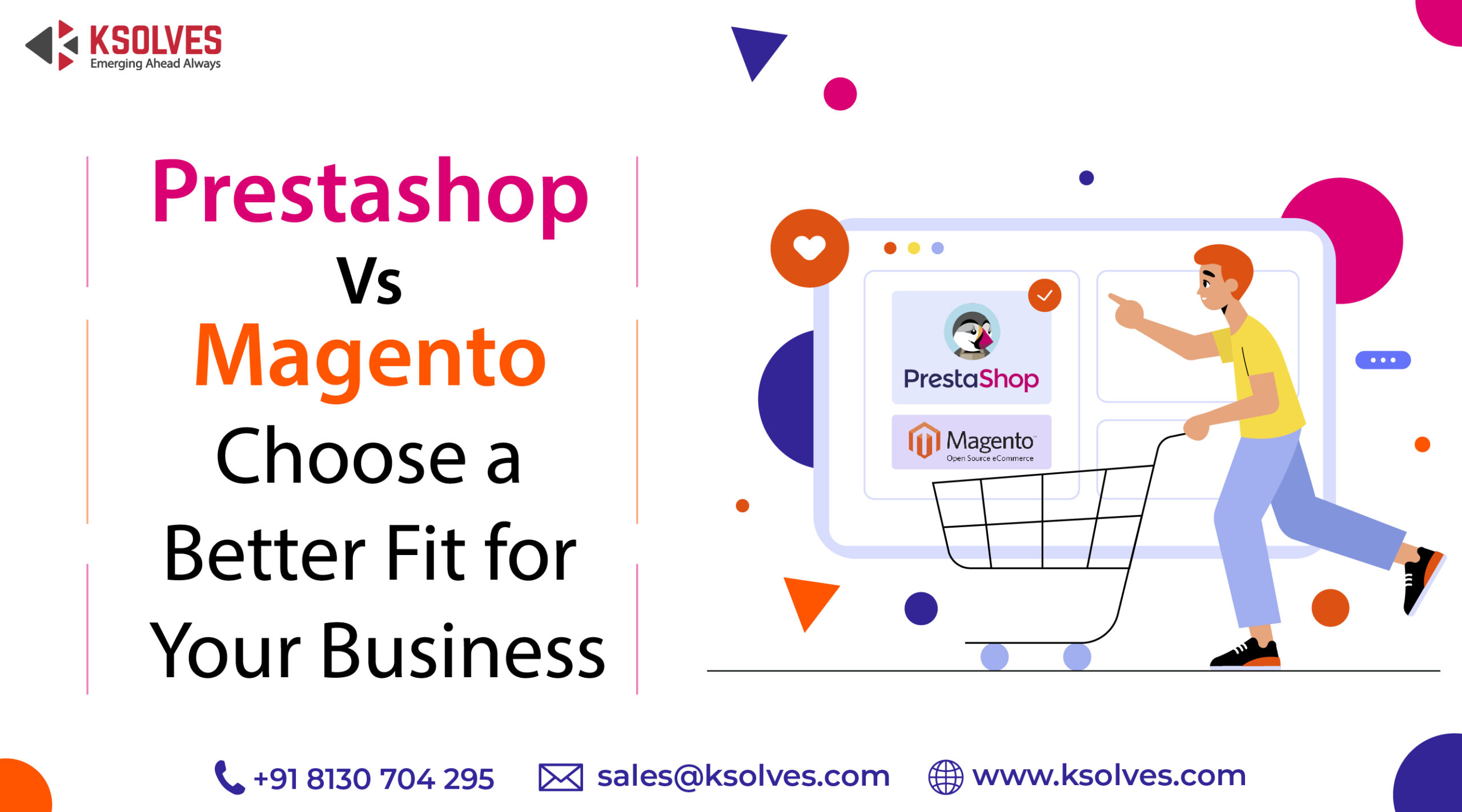Magento and PrestaShop are popular eCommerce platforms. Each offers unique features for businesses.
Choosing the right platform can be challenging. Both Magento and PrestaShop have strengths and weaknesses. Understanding these can help you make the best decision. This comparison will highlight key differences. It will guide you to the best choice for your needs.
Whether you are starting or scaling, picking the right platform is crucial. This guide will simplify your decision-making process. Let’s explore what each platform offers and how they can fit your business.
Ease Of Use
When choosing between Magento and Prestashop for your business, one of the key factors to consider is ease of use. After all, a user-friendly platform can save you time, reduce stress, and help you achieve your business goals more efficiently. But how do these two platforms stack up in terms of ease of use? Let’s dive in and compare their user interfaces, learning curves, and setup processes.
User Interface Comparison
First impressions matter, especially when it comes to user interfaces. Magento and Prestashop each have their unique approach to UI design.
- Magento: Known for its robust features, Magento’s interface can feel overwhelming at first. It’s packed with options and menus, which can be both a blessing and a curse. For tech-savvy users, this means more control and customization. But for beginners, it might seem like navigating a labyrinth.
- Prestashop: On the flip side, Prestashop offers a cleaner, more straightforward interface. It’s designed with simplicity in mind, making it easier for non-technical users to grasp. The dashboard is intuitive, with clear labels and easy-to-find settings, which can be a significant advantage for small business owners.
In a nutshell, if you prefer a wealth of options at your fingertips and don’t mind a steeper learning curve, Magento could be your go-to. However, if you prioritize simplicity and ease of navigation, Prestashop might be the better choice.
Learning Curve And Setup
Now, let’s talk about the learning curve and setup for both platforms. How easy is it to get started with Magento and Prestashop?
- Magento:
Setting up Magento can be a bit of a journey. It’s like learning to drive a high-performance car; once you get the hang of it, you can do amazing things. But initially, it might require some patience and a few tutorials. Magento’s extensive features mean there’s a lot to learn, and you might need some technical assistance to get everything running smoothly.
- Prestashop:
Setting up Prestashop is more akin to driving a reliable, user-friendly car. It’s straightforward and doesn’t require an expert mechanic to get started. The installation process is simpler, and there are plenty of resources and community support available to guide you. This makes it an attractive option for those with limited technical skills.
In summary, if you have the technical know-how or are willing to invest in learning, Magento offers powerful tools and customization. But if you want something that’s easier to set up and manage from the get-go, Prestashop might be the better fit for your business.
So, which platform suits your business best? Think about your technical skills, the complexity of your needs, and how much time you’re willing to invest in mastering your e-commerce platform. Both Magento and Prestashop have their strengths, and understanding their ease of use can help you make an informed decision.

Credit: nimbuspost.com
Customization Options
Customization is key when choosing an eCommerce platform. It allows your business to stand out. Both Magento and Prestashop offer various customization options. These options help you create a unique online store. Let’s explore how each platform handles customization.
Themes And Templates
Themes and templates give your online store its look and feel. Magento offers a wide range of themes. Some are free, while others are paid. These themes are highly customizable. You can change layouts, colors, and fonts easily. Magento also supports custom themes. This means you can create a unique design from scratch.
Prestashop also has many themes available. The Prestashop marketplace offers both free and paid themes. These themes are easy to install and customize. Prestashop’s themes are often simpler. This makes them easier for beginners to modify. You can change colors, fonts, and layouts with ease. Custom themes are also an option in Prestashop.
Extensions And Plugins
Extensions and plugins add extra features to your store. Magento has a large marketplace for extensions. You can find extensions for SEO, marketing, and more. These extensions are easy to install. They integrate well with your store. Magento’s open-source nature allows for custom extensions.
Prestashop also offers many modules. These modules add various features to your store. You can find modules for payments, shipping, and analytics. Prestashop’s modules are user-friendly. They are easy to install and manage. Custom modules are also possible in Prestashop.
Performance And Scalability
When it comes to choosing an e-commerce platform, performance and scalability are critical factors. Your online store needs to be fast, responsive, and capable of handling a growing amount of traffic. Let’s dive into how Magento and Prestashop stack up against each other in these areas.
Speed And Responsiveness
Speed is crucial for user experience and SEO. If your site is slow, customers will leave, and your search engine ranking will drop. So, how do Magento and Prestashop fare?
- Magento: Magento is a heavyweight, packed with features. This can sometimes make it slower out of the box. However, with proper optimization and hosting, Magento can be blazing fast. Think of it as a sports car that needs a bit of tuning to hit top speed.
- Prestashop: Prestashop is lighter and generally faster right from the start. It has fewer built-in features, which means less load on the server. For small to medium-sized stores, this can be a huge advantage.
In summary, if you need speed without extensive customization, Prestashop might be your best bet. But with the right tweaks, Magento can also reach impressive speeds.
Handling Large Volumes Of Traffic
Can your chosen platform handle Black Friday rush or a sudden viral product? This is where scalability comes into play.
- Magento: Designed for large-scale operations, Magento excels in handling high traffic. It supports multiple servers, allowing you to scale up as needed. Big brands often choose Magento for this very reason.
- Prestashop: While great for smaller shops, Prestashop can struggle under heavy loads. It doesn’t scale as easily as Magento. However, for most small to mid-sized businesses, it should suffice.
In conclusion, if you anticipate rapid growth or seasonal spikes, Magento offers the robust infrastructure you need. But for smaller, steady traffic, Prestashop can be a cost-effective solution.
Choosing between Magento and Prestashop depends largely on your specific business needs. Consider your current size, growth plans, and technical expertise before making a decision. Either way, both platforms offer unique strengths that can help your online store thrive.
Seo And Marketing Tools
Choosing the right eCommerce platform can impact your business’s online presence. SEO and marketing tools play a crucial role in driving traffic to your website. Let’s compare Magento and Prestashop in this context.
Built-in Features
Magento offers robust SEO features out of the box. It includes URL rewrites, meta tags, and sitemaps. These tools help search engines understand your site. Magento also supports Google Analytics integration. This feature tracks your site’s performance.
Prestashop also comes with essential SEO tools. You can customize URLs, meta tags, and alt tags. It provides an easy-to-use interface for these settings. Prestashop supports Google Analytics too. Both platforms provide strong foundational SEO features.
Third-party Integrations
Magento has a wide range of third-party SEO and marketing extensions. These include tools for advanced SEO, email marketing, and social media integration. The Magento Marketplace offers many options. You can find both free and paid extensions.
Prestashop also supports various third-party integrations. The Addons Marketplace offers SEO and marketing modules. These modules can enhance your site’s functionality. Options include social media tools, email marketing, and analytics plugins. Both platforms allow customization through third-party tools.
Magento and Prestashop provide strong SEO and marketing capabilities. Your choice depends on your specific needs and preferences.
Cost And Pricing
When choosing between Magento and Prestashop for your business, one of the most critical factors to consider is the cost and pricing. This includes the initial setup costs, as well as the ongoing maintenance and upgrades required to keep your eCommerce store running smoothly. Let’s dive into what each platform offers in terms of expenses.
Initial Setup Costs
Setting up an online store can be quite an investment, and both Magento and Prestashop have their own cost structures. Let’s break them down:
| Expense Type | Magento | Prestashop |
|---|---|---|
| Software Cost | Free (Open-source) or Paid (Enterprise Edition) | Free (Open-source) |
| Hosting | High (due to resource intensity) | Moderate |
| Domain Name | Varies | Varies |
| SSL Certificate | Varies | Varies |
| Design & Themes | High (Premium Themes) | Moderate |
Magento can be expensive to set up, especially if you opt for the Enterprise Edition. However, it offers a robust platform for larger businesses. On the other hand, Prestashop is more affordable in terms of hosting and themes, making it a great choice for small to medium-sized businesses.
Ongoing Maintenance And Upgrades
Once your store is up and running, there are additional costs associated with maintenance and upgrades. Here’s what to expect:
- Magento: Due to its complexity, Magento often requires professional developers for maintenance and upgrades. This can add up over time. Plus, if you choose the Enterprise Edition, there are annual licensing fees.
- Prestashop: This platform is known for being user-friendly, so you might be able to handle some maintenance tasks yourself. However, for more complex upgrades, professional help may still be needed, but it tends to be less costly compared to Magento.
Both platforms require regular updates to ensure security and functionality. Magento’s updates can be more frequent and technical, which might require ongoing professional support. Prestashop, while simpler, still needs attention to keep everything running smoothly.
In conclusion, the choice between Magento and Prestashop largely depends on your business size and budget. If you are a larger business looking for a feature-rich platform and don’t mind the higher costs, Magento could be the way to go. For smaller businesses with tighter budgets, Prestashop offers a cost-effective and user-friendly solution.

Credit: orienteed.com
Community And Support
When deciding between Magento and Prestashop for your eCommerce platform, understanding the community and support available for each can be crucial. A strong support system can make a world of difference when you encounter issues or need guidance. In this section, we’ll dive into the different support avenues for both Magento and Prestashop.
Official Support Channels
Both Magento and Prestashop offer official support channels, but they vary in their approach and depth. For those who prefer a direct line to the experts, these channels can be a lifesaver.
- Magento: Magento provides a comprehensive support system. There are various tiers of support available, depending on your subscription plan. This includes 24/7 technical support for critical issues, a knowledge base with extensive documentation, and access to certified Magento developers.
- Prestashop: Prestashop also offers official support through its Addons Marketplace. You can purchase support plans that include technical assistance, and there is a dedicated support team to help resolve issues. Additionally, Prestashop offers a wide array of documentation and user guides.
Community Forums And Resources
Sometimes, the best advice comes from those who have walked the same path. Community forums and resources are treasure troves of information, where you can find solutions, share experiences, and connect with fellow users.
- Magento: The Magento community is vast and active. There are numerous forums, such as the Magento Community Forums, where users can ask questions, share tips, and find solutions. Additionally, many developers and enthusiasts contribute to blogs, YouTube channels, and social media groups, offering tutorials and advice.
- Prestashop: The Prestashop community is equally vibrant. The official Prestashop forums are a popular destination for users seeking help. There are also many third-party blogs, YouTube channels, and forums dedicated to Prestashop, where you can find tutorials, themes, and modules. The community is known for being friendly and supportive, making it easier for newcomers to get started.
In conclusion, both Magento and Prestashop offer robust support and community resources. Your choice may ultimately depend on the level of official support you require and how much you value the input from a community of users. Whether you prefer the structured support channels of Magento or the vibrant, friendly community of Prestashop, there is ample help available to ensure your eCommerce journey is a successful one.
Security Features
When choosing between Magento and Prestashop, security is a top concern. Both platforms offer robust security features to protect your online store. Let’s explore their built-in security measures and additional security options.
Built-in Security Measures
Magento has strong built-in security measures. It includes regular security patches and updates. These protect against new threats. Magento also offers two-factor authentication. This adds an extra layer of protection.
Prestashop also offers built-in security features. It includes SSL certificates for secure transactions. Prestashop provides regular updates to fix security issues. It also has security tokens to prevent unauthorized access.
Additional Security Options
Magento allows the use of various security extensions. These can enhance the security of your store. Some popular options include firewalls and malware scanners. You can customize the security to your needs.
Prestashop also offers additional security modules. These include anti-fraud tools and enhanced password policies. You can add these modules to further secure your store. They help to safeguard customer data and transactions.

Credit: www.ksolves.com
Case Studies
When deciding between Magento and Prestashop for your e-commerce business, real-life examples can be incredibly helpful. Let’s take a closer look at how businesses have successfully implemented these platforms. By examining their journeys, you can gain valuable insights and determine which platform might be the best fit for your specific needs.
Successful Magento Implementations
Magento has been a popular choice for many large businesses due to its robust features and scalability. Here are a couple of success stories that highlight the power of Magento:
- Coca-Cola: Coca-Cola used Magento to create an immersive, customized e-commerce experience. They wanted a platform that could handle high traffic and offer a personalized shopping experience. With Magento, they successfully integrated a user-friendly interface and advanced features, boosting their online sales and customer satisfaction.
- Ford: Ford’s parts and accessories business needed a platform that could handle a vast inventory and complex pricing models. Magento’s flexibility allowed Ford to create a streamlined e-commerce site that improved their order processing efficiency and enhanced the overall customer experience.
Successful Prestashop Implementations
Prestashop is known for its simplicity and ease of use, making it a favorite among small to medium-sized businesses. Here are some examples of businesses that thrived using Prestashop:
- Zippo: The famous lighter company, Zippo, chose Prestashop for its user-friendly interface and cost-effectiveness. They were able to quickly set up their online store, customize it to reflect their brand, and manage their products efficiently. This led to an increase in their online sales and a better customer experience.
- Fashion Nova: A fast-growing fashion retailer, Fashion Nova, needed a platform that could keep up with their rapid expansion. Prestashop’s modular structure allowed them to easily add new features and adapt to their growing needs, resulting in a smooth and scalable e-commerce solution.
Frequently Asked Questions
Is Magento Better Than Prestashop?
Magento offers more advanced features and scalability for large businesses. PrestaShop is easier to use and suits smaller businesses. Choose based on your business size and needs.
What Is Better Than Magento?
Shopify is often considered better than Magento for ease of use, affordability, and faster setup.
Is Prestashop Still Used?
Yes, PrestaShop is still widely used. Many businesses choose it for its flexibility and robust e-commerce features.
How Does Magento Help Businesses?
Magento helps businesses by offering a flexible, scalable eCommerce platform. It provides powerful SEO, marketing, and catalog management tools.
Conclusion
Choosing between Magento and Prestashop depends on your business needs. Magento offers robust features for large stores. Prestashop is user-friendly and great for small to medium businesses. Both platforms provide excellent support and customization options. Evaluate your budget, technical skills, and future growth plans.
With the right choice, your online store can thrive. Remember to consider scalability and ease of use. Both platforms have their strengths. Make an informed decision that aligns with your business goals.

